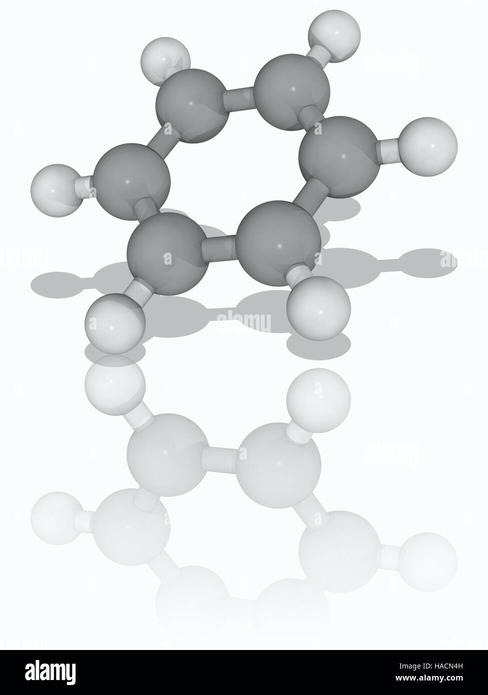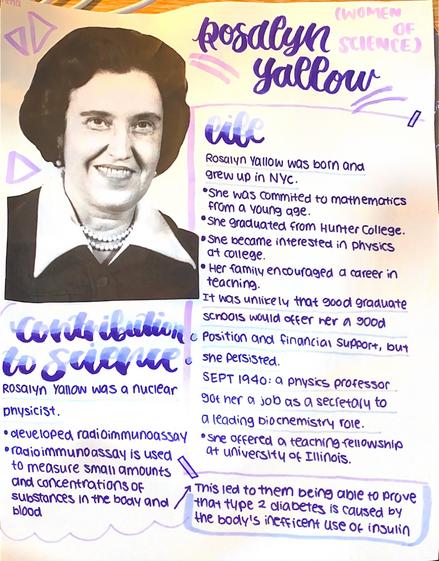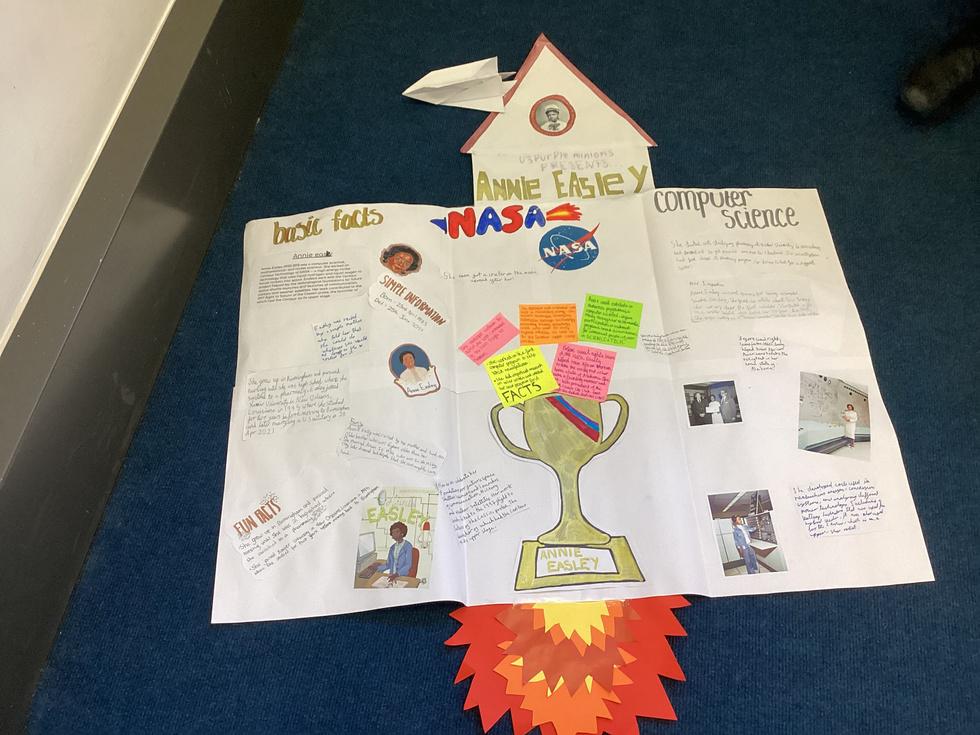Headingtonium
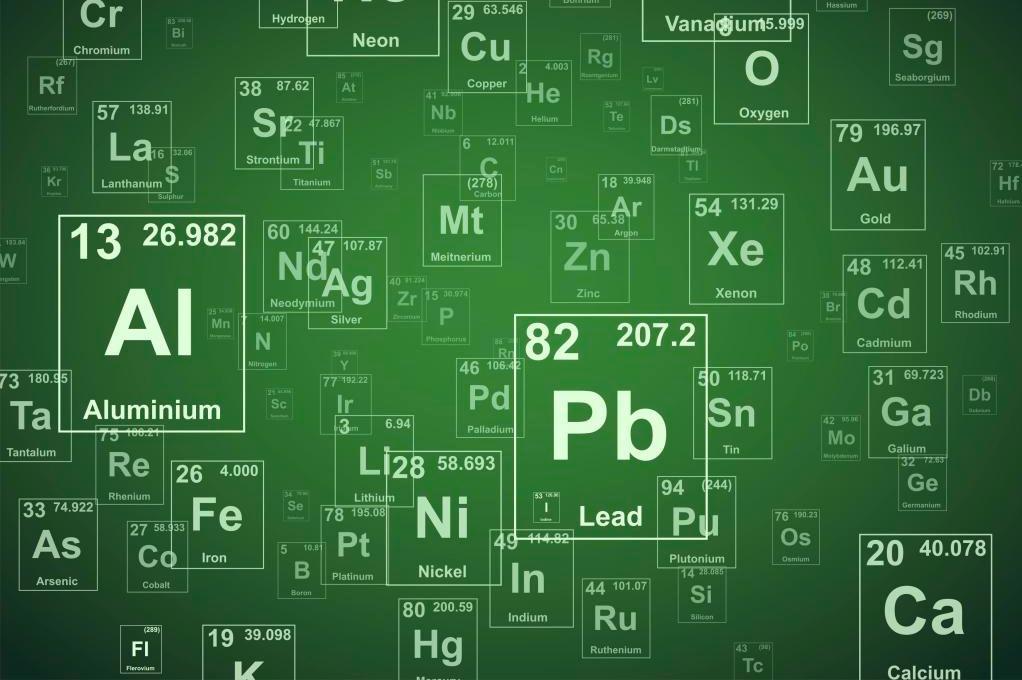
Contents Contents
Top 10 elements
Scientific articles

Formula one
Car T cells
The stent evolution from Coronary Heart Disease
Science and climate change
Snakes: the good, the bad and the ugly
Is 'we can't measure intelligence accurately' a myth?
Could there be life in our universe?
The Loneliest Whale in the World: the 52 Hertz Whale
Cystinosis - mutation and inheritance to disease
Time travel: fact or fiction?
Science crossword
Scientist profiles
Scientific book recommendations
Do try this at home
Science in the News
Winners!
HEADINTON SCHOOL OXFORD
TOP 10 ELEMENTS
Carbon
Is lightweight and strong therefore useful when building light cars that need to travel quickly. Carbon fibre is a good substitute to steel in F1 cars and sports equipment e.g. tennis racquets
Building blocks of most life forms
Graphite in pencil to record ideas and stories
Potassium
As it is used in banana bread! (it is also used in fertilizers)
Lithium
Needed in modern batteries
Potentially the only source of readily available tritium needed for nuclear fusion
Silicon
An essential component of all microchips which is crucial in the technology driven world we live in and for future electronic advancement
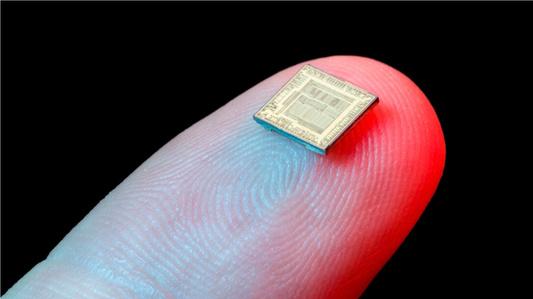
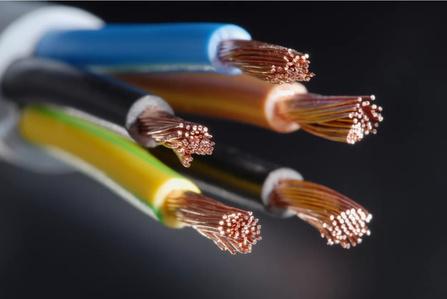
We would not have anything that has been powered by the fourth industrial revolution without silicon
Hydrogen
Useful for clean energy and could potentially power the future through:
Hydrogen fuel cells
And when in water, hydroelectric power is also sustainable
It is also the lightest element so is useful as a fuel when sending rockets to space
Iron
Used to make steel which is now used in most building as well as in many cars
It also powered the Industrial Revolution
Nitrogen
A major ingredient in NPK Fertalisers which are necessary to keep up with food production for our ever growing population
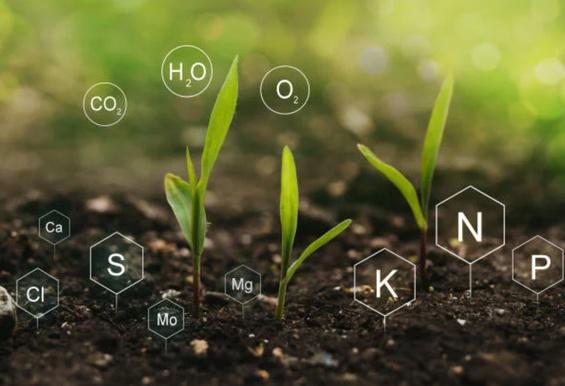
Oxygen
When combined with Hydrogen, it is used to power space crafts which allows for space exploration and space travel
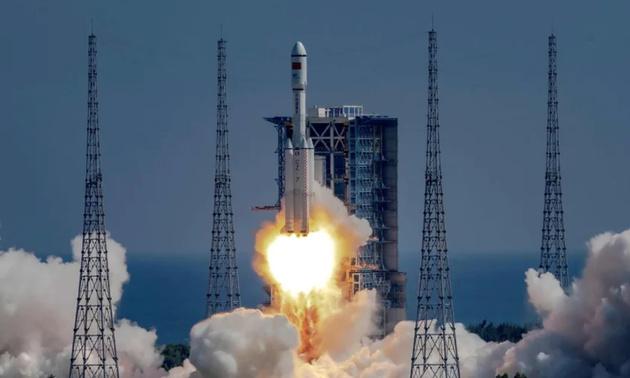
It also allows humans and almost all living things to respire
Copper
A cheap metal
A brilliant conductor due to its low resistivity
It is also used for cooking pots, cables and wiring, lights, motors and computers
Sodium
A food preservative, flavouring agent and de-icer
It also maintains a water/ mineral balance and is needed for nerve and muscle control in the human body
HEADINTON SCHOOL OXFORD
TOP 10 ELEMENTS
Carbon Fibre
Carbon fibre is an incredibly versatile and useful material and more specifically relates to rowing (higher quality boats use carbon fibre to decrease their weight as carbon fibre is a very strong but lightweight material) and motorsports. In formula 1 (and general motor sports) carbon fibre is organised in specific layers and orientations to disperse stress through the car to minimise damage when impacted.
Rubber
Rubber was first invented in 1600 BC and since then it has been used for a massive variety of things. From tyres to seals, rubber is a versatile and highly sought after compound with companies like Ford creating mini civilisations in the Amazon (“Fordlandia”) Rubber is an ‘elastomer’ which is a stretchy polyisoprene.
Kevlar
Fuel Compounds
Whether it’s a daily trip to school or a mission to Mars the compounds available as fuel to us dictate where and how we can travel. Most fuel compounds are made from Crude Oil, a finite source of hydrocarbons, as a move towards a more sustainable future we are starting to see efforts made for hydrogen fuel cells, electric batteries and bioethanol as methods of fuelling our transport
Nomex
Similarly to Kevlar, Nomex is also patented by DuPont and is a heat and flame resistant fibre Nomex is a meta aramid and is used in heat resistant outfits worn by both firefighters and Formula 1 drivers due to its light weight and resistance to heat and electricity
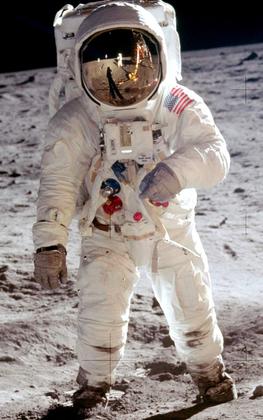
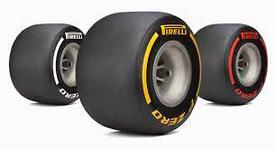
Kevlar is an ‘aramid fibre’ which can be woven into materials and is incredibly strong and lightweight with uses among aerospace engineering (the body of the aircraft is the predominant use in this industry) as well as within the military where it is used for bulletproof vests and body armour. Kevlar has resistance toward corrosion and heat and was patented by DuPont
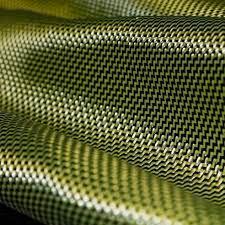
Used in objects seen all around us, LED lights are reliant on different chemical compounds to create the brilliant display of colours they offer The semiconductors the LEDs are made from use elements from group 3 and 5 of the periodic table and depending on the combinations and the impurities the energy between the n-type and p-type layers change and inturn we get different wavelengths and colours of light

Paracetamol
Paracetamol is a common pain reliever with very few, if any, short term side effects and is generally safer than nonsteroidal anti-inflammatory drugs for long term use. Paracetamol was discovered in 1877 but was not used widely until 1947 due to incorrect information about a potential side effect from original testing

Caffeine
Caffeine is a CNS stimulant which is part of the methylxanthine class and is naturally found in tea and coffee. Within these plants caffeine is used as a pesticide but caffeine is safe for humans to consume in small quantities Caffeine can be used to relieve headaches and when combined with other analgesics may also help with cramps and other pain
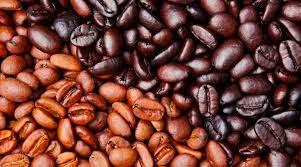
Poly Methyl Methacrylate (PMMA)
PMMA is a synthetic resin produced by the polymerisation of methyl methacrylate Common uses are as a substitute for glass in windows and signs but a more specific use is in Ortho-K lenses which are semipermanent corrective lenses worn at night which reshape the eye (used only for short sighted wearers) and can correct some vision (normally up to -5) for around 24 hours.
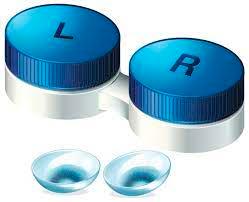
Sodium acetate/Iron oxide
These two compounds are commonly used in handwarmers, iron oxide in single use and sodium acetate in the reusable ones Both react exothermically to produce heat for multiple hours and require a balance of quick reaction time and long lasting effects Iron oxide is produced when the handwarmer is exposed to air while the sodium acetate handwarmers contain small metal discs which are snapped and catalyse the reaction which can then be reset in boiling water to redissolve the crystals
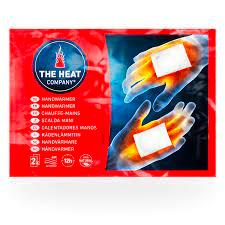
FORMULA ONE BY OLIVIA
Ever since I was a child I have been interested in engineering and I hope to one day become a woman in the industry. The main area of engineering that interests me is Formula One. I find it fascinating how much the designs of these cars and their engines have changed since the sport started in the 1950’s and I look forward to seeing how they continue to develop.
I regularly watch the Grand Prix and can’t help but notice how few female engineers are on the teams. According to the Women’s Engineering Society only 14.5% of all engineers are female and in F1 this number is a lot lower. By becoming a woman in STEM I hope to one day inspire other young girls into doing the same and hopefully we can bring that 14.5% up to a larger percentage.
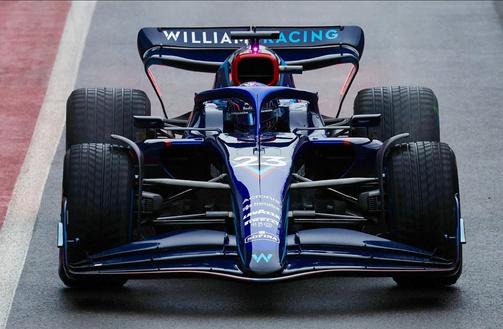
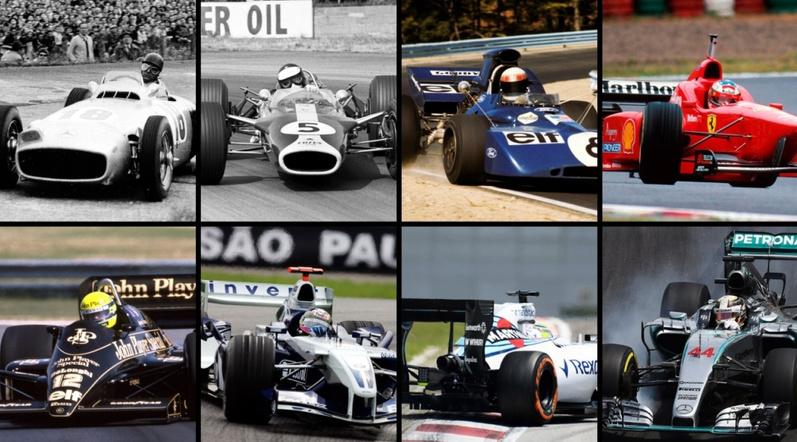
Formula One is more of a battle of science than drivers. There are so many scientific frontiers being pushed by the F1 industry from designing longer lasting tyres to better aerodynamics or finding lighter but stronger materials to build the car with, there is a continuous and often accelerating development of new technology Although F1 is an exciting sport its also so much more than that A lot of these innovations and ideas will go on to being introduced in normal road cars, affecting scientific progress off the race track
LE MANS 66'
Despite always having been fascinated by cars and engines and how machines fit together, the first story to have drawn me towards the F1 industry was the story of Ken Miles portrayed in the 2019 film ‘Le Mans 66’. Although the Le Mans race is an endurance race unlike F1 races which tend to be around a 1/12th that time; the cars, designers and racing drew me in. From that fateful day onwards I have watched more races than I can count and I hope to one day do something in that industry.
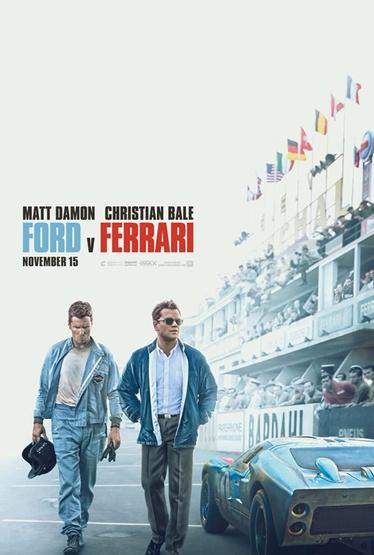
My favourite race car company is Ferrari and although they could be doing better, I still hope that they manage to bounce back soon and with some improvements on both tactics and the car, Leclerc might be able to win a championship one day.

DEVELOPMENTS MADE TO FORMULA 1 RACING SUITS AND CARS TO ALLOW FOR THE BEST SAFETY AND COMFORT OF THE DRIVER.
BY ALIWhy is the design of the racing suit or car so important?
Formula 1 racing has been one of the most popular sports in the world since it started in 1950 The drivers are on the track for hours at a time and due to the high levels of G-force experienced by the drivers they must be protected against whiplash and other related issues However, more importantly, they must be protected from the potential threat of extreme temperatures While this is hopefully not an every-race concern for the teams, we saw how important this consideration was in 2020 when F1 driver Romain Grosjean crashed during the Bahrain Grand Prix. His estimated force was 67Gs and when the car collided with the barrier he was travelling at 119 mph. This resulted in the fire seen in the picture above. The potential for this extreme force and temperature is in the forefront of the engineers’ and manufacturers’ minds when designing and creating the equipment used by the drivers The halo, introduced in 2016 and made mandatory in 2018, is one of these features that is designed specifically for the drivers’ safety, adding no speed to the car, and while initially many voted against the proposal, after this crash in 2020, the halo was shown to be necessary for the drivers’ safety as the teams continue search for more speed
What is the Halo?
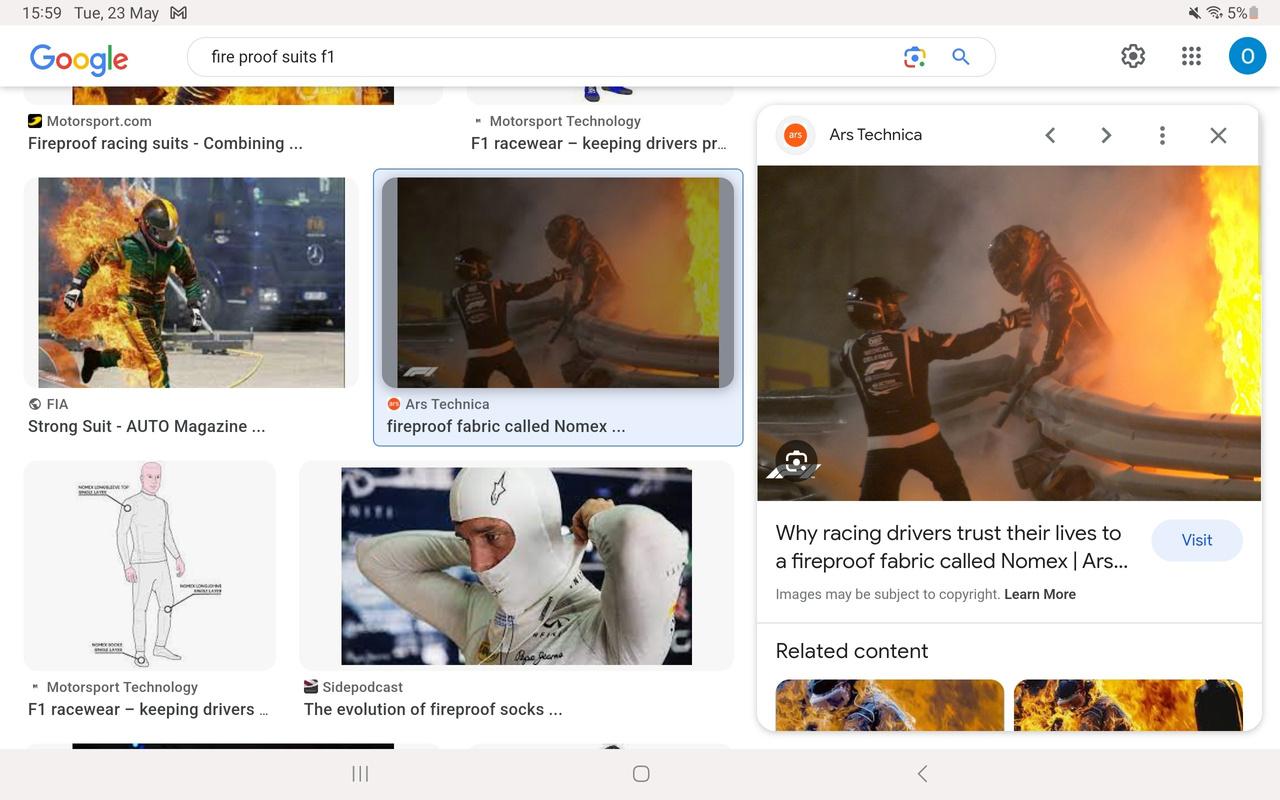
As previously mentioned, the halo is a vital piece of equipment fitted into the cars that was originally vetoed due to ‘aesthetics’. The Halo itself is a titanium bar weighing around 9kg which is connected to the vehicle frame in 3 points to protect the driver's head In simulations run by the FIA, (Fédération Internationale de l’Automobile), out of 40 incidents (using data from real crashes) the halo increased the driver's survival rate by 17% In real incidents, the halo was shown to save many drivers' lives in incidents that, pre-halo, had led to decapitations In essence, the halo works by acting as a barrier between flying debris or collisions and is said to be able to “support the weight of two African elephants and sturdy enough to deflect a large, full suitcase at a speed of 140mph” by the FIA While Grosjean's fiery crash was one that was pivotal in people's changing opinions, there have been many incidents across Formulas 1, 2,3,4 and E that have led to improving opinions on this addition. Many drivers have spoken out, with Lewis Hamilton, driving for Mercedes, stating that it ‘saved my neck’ when Verstappen went over his car and Grosjean saying that it ‘is the greatest thing that we've brought to Formula one’ While the halo was criticised originally for obstructing the drivers' ability to evacuate the cars quickly, Grosjean showed that this has very little factual basis as he was able to independently, and quickly, evacuate his car with only minor burns to his wrists and ankles
Fireproofing and modifications to the driving suits
While the drivers in the 1950s raced in everyday clothes, these suits have gone through a large amount of progress in terms of their safety and design The suits are now made of a material called ‘Nomex’ which is an artificial fibre which must be able to withstand temperatures of 600º-800º Celsius for 10 seconds and the manufacturers must also ensure that the internal temperature does not exceed 41ºC for 11 seconds to allow for the full safety of the driver The innerwear of the suits (socks, trousers, and shirt) are also made of relatively thin layers of Nomex fibre for further fireproofing However, due to the suits, the drivers are left very hot and uncomfortable and are rumoured to lose around 2-4 kilos of water weight during the race While the gloves and boots are fireproof, they are made thinner to allow the driver improved performance. The gloves, made of Nomex and leather, are thin to allow the driver to feel the vibrations of the steering wheel and adjust their race approach while steering Boots are made of leather with thin rubber soles, used to allow the driver to feel the pedals better and stop their feet from slipping.
The Helmets’ design, along with the halos’, is designed to reduce damage to the driver's head. The helmet is layered with carbon fibre and fireproof material, but only weighs 1 2 kilos This weight is an important feature as the lighter the helmet, the less G-force whiplash the drivers receive but they must remain strong enough to withstand large impacts, avoiding head injuries. So a middle ground is found between low weight and high strength to ensure both optimum performance and safety The helmets are custom fit not only for comfort, but for safety, as the better the fit the less movement around the driver's head and the less debris or flames that can enter the helmet.
CAR T-Cells
How revolutionary findings in a very niche area of science can change the way we treat chronic illnesses.
By SofijaDuring my time at Headington, my interest in STEM subjects (specifically the three sciences) has drastically increased. To this day, I am continuously fascinated by new discoveries and potentials that each of the sciences’ carry. One specific area that I am highly interested in is the study of stem cells for treating chronic illnesses
Before I go into any further details, I thought it would be best to share a bit of context. My late grandmother was a biochemist and researcher who spent hours upon hours of the day sitting in a laboratory and looking at cancer cells. She could spend her whole shift staring at a group of cells under a microscope and would never complain or get tired of it However, she also suffered from rheumatoid arthritis (a chronic condition) . The reason I mentioned my grandmother is because it was her work that inspired me to look into the sciences more and what's fueling me into sharing the beauty of this area of study.
One particular area of cell study that I find incredibly captivating is the study of T cells T cells are deprived from hematopoietic stem cells (which are found in bone marrow). When T cells are in their early phases, they travel to the thymus gland to develop (hence the T in their name). At the thymus, the precursor cells differentiate into mature T cells (also known as naïve T cells) , which are then released back into the bloodstream; however, their differentiation does not stop once they leave the thymus. T cells play a crucial part in the immune system, as they focus on specific foreign particles. These cells are specifically designed to fight off infections they have never encountered before, which means they play a crucial role in immunity to foreign substances and diseases that enter the body.
Recently, there has been a breakthrough in CAR T cell research which has sent 5 people suffering from lupus (an autoimmune disease which causes your body to mistakenly attack healthy parts of your body) into remission. CAR T-cell therapy involves retrieving the pateints’ own T cells and modifying them to attack new targets (for example, cancer cells).
In this particular instance, the harvested T cells were modified to attack the patients’ B cells when re-introduced into their bloodstream. The B cells of those suffering from lupus produce large quantities of antibodies which attack healthy tissues within the body instead of pathogens. This was proven to be a success as the modified T cells managed to wipe out the malfunctioning B cells and dramatically improved the patients’ conditions.
The 5 people who received this revolutionary T cell therapy have reportedly stopped taking their lupus medications for between 3 to 17 months. As lupus affects around 1 in a 1000 people, this could be life changing for the approximately 5 million people suffering from lupus worldwide, once it gets approved. However, scientists say that this raises hopes for treatment of other chronic illnesses (including rheumatoid arthritis). If this treatment were widely available just 20 years earlier, it could have changed the life of not just my own grandma, but 14 million others suffering from the same condition. This is why I am so passionate about science and cell research as I believe that discoveries like this (which all lead back to basic biology and chemistry) can change the world.
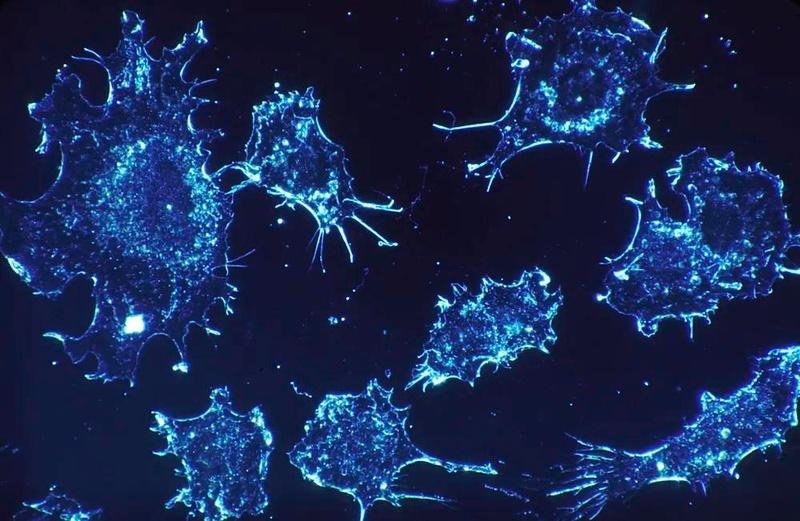
The stent evolution from Coronary Heart Disease (CHD)
By PaigeNo matter if you are wealthy or not, you may still have a chance to have blocked coronary arteries Think about it, being poor, not able to afford healthy food and can only have fast food every meal. French fries, fried chicken, chicken nuggets, can you imagine how appetizing it is? But did you know you had just consumed a layer of extra fat which may lead to serious illness such as CHD.
However, do you know people who are able to afford healthy food may also face this problem? They may have a healthier diet in comparison but may also have a higher life expectancy, as you get older, your arteries may get hardened, plaques may also build up which causes blockages on the arteries.
So what do we do when our arteries are blocked? With modern technology, stents inserted to the heart are produced for permanent use, they can also improve the quality of life of patients. As many as 2 million people in the world get coronary artery stents every year.
From the biology perspective
Arteries in the heart serve an important role, they supply nutrients to heart vessels to allow our heart muscle to beat and to regulate our whole body. Stents are life saving, they open up the artery which restores blood flow and supplies oxygen.

Stents traditionally made of metals, the bare metal stent (1st gen) works like a spring to prop open the artery, over time, body tries to reject it, causing a process called restenosis (renarrowing of stent), developing more symptoms because of repeated blockages, cells clump on the stent developing an acute clot causing blockage inside stent
Once a stent is in place, you need to be on a few long term medications to maintain blood flow within the arteries and to stop the process and build up of cholesterol developing again. Blood thinning medication (aspirin- a blood thinner) is needed for a lengthy period of time. However, it is insufficient to help reduce the risk of clots forming inside the stent, so it’s usually combined with another medication which is stronger than aspirin.
The downside of placing a stent is that, in 3-10 percent of the cases, stents coating dissolves, which exposes the surface of the metal and re-narrowing of the artery after inserting a stent. Whereas the underlying risk factors are caused by high blood pressure, high cholesterol, smoking, overweight and diabetes. If you don't control it other problems will also develop in other parts of the artery or inside the stent
From the physics perspective
Stents are of 60-70 microns thin, which acts like spring, inserted into the artery where the site of blockage is and opens the artery up
Nowadays, stents are continuing to evolve, both in medicine and biomedical engineering
There are a lot of things to consider when stents are designed, for example, which stent is more compatible with the body? And which stent has less complications? The size of stents are dependent on your artery, some arteries are large and typical size being 3.5mm to 4mm in diameter. Stents are now with fixed measurements, 2.5mm5mm in diameter, while length can vary depending on size needed to treat for a particular blockage, long stents are used to treat long parts of arteries which have a lot of cholesterol.
For now and the future, doctors and engineers have to investigate how we will tailor the stent or customise stents to fit individual patients. Because all of our arteries are unique, and there are no two arteries which are the same. Engineers are doing research on 3D printing, taking clear images of artery and laser type scans which potentially could provide an exact custom design to print and implant to the patient for their specific blocked arteries.
From the perspective of chemistry
Stents are made of alloy, stainless steel, cobalt, chromium, and are thin devices. For now, new generation stents which are called drug-eluting stents (DES) are implanted in 2003, which has the same material and same stent as the bare metal stents (1st generation stent) However, the DES was coated with an immune modulating drug, drug released over a period of a few months, into bloodstream and artery wall, to reduce body’s reaction against the stent.
Nanotechnology allows for efficient modulation of surface roughness, chemistry, feature size, and drug loading, to attain the desired biological response. After the major advance in 2003, stents continue to evolve, made of metallic alloys, are thin and have long lasting results.
In the future, a new generation stent, potentially made of magnesium will actually break down and dissolve in 18 months to 2 years time, potentially leaving nothing behind. Devices made of polymers or plastic type materials could be used for life. With polymer stents, they open the artery up and over a period of a few years, these stents will dissolve and break away leaving the artery open.

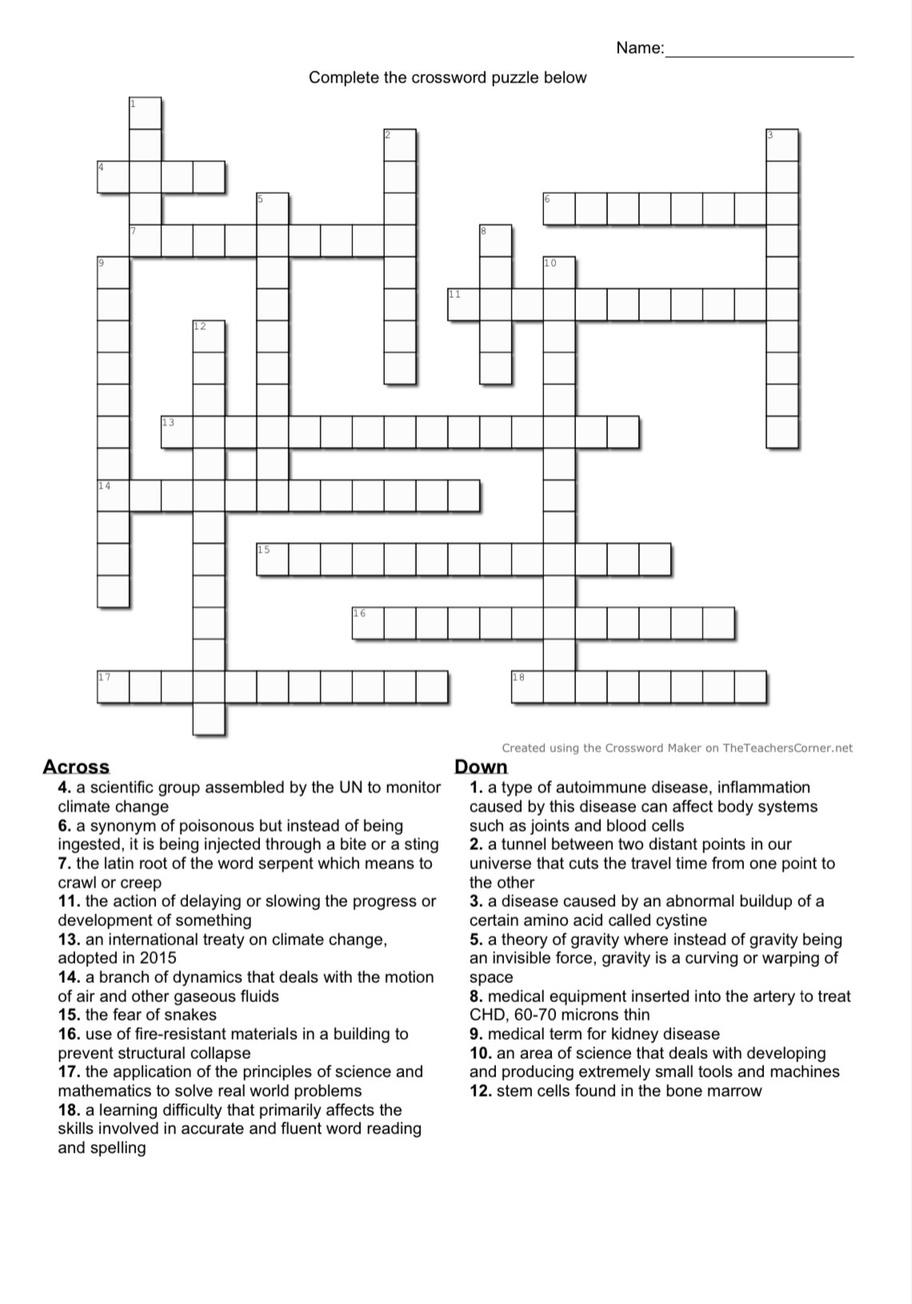
the answers to the crosswords are to be found here

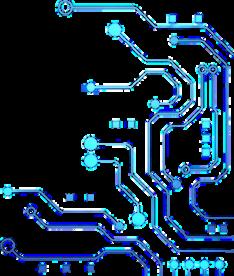
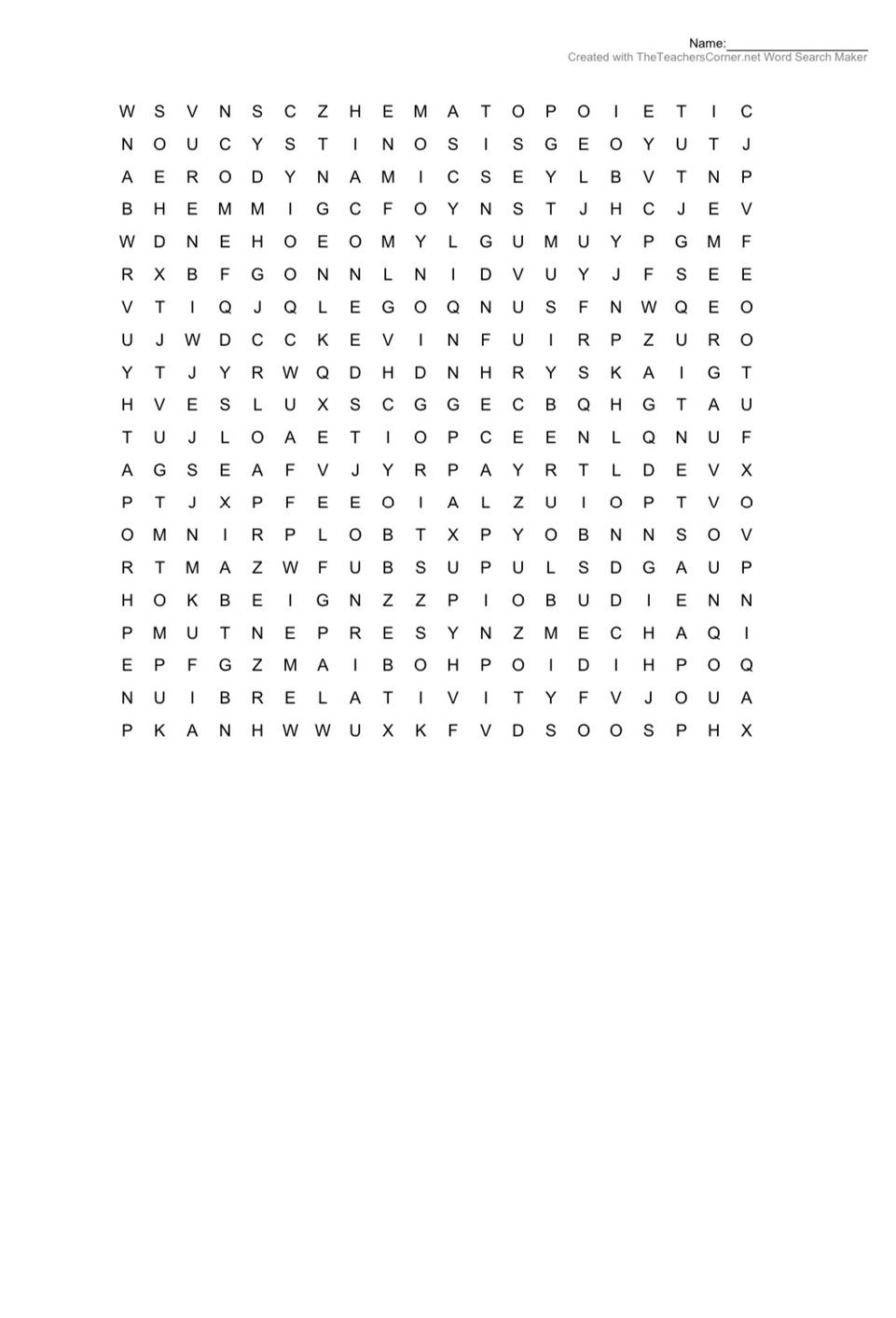
SCIENCE and CLIMATE CHANGE FARAH
A few years ago, I came across the following quote: ‘We do not inherit the Earth from our ancestors; we borrow it from our children’. Nobody can quite pinpoint the origin of this saying. Some people have accredited it to famous speakers while others refer to it as a Native American proverb. Wherever it first originated and however the saying has been expressed in the past, the sentiment remains the same. Just as there are consequences for damaging a library book, there are consequences for damaging the Earth, except it is not necessarily us that will suffer the worst of these consequences, but rather those of our future generation.
In 2015, the Paris Agreement was negotiated at the 2012 United Nations Climate Change Conference. The long-term goal of this agreement was to keep the rise in global temperatures below 2 degrees celsius since pre-industrial times and preferably limit the rise to 1.5 degrees celsius. 1.5 sounds like a tiny, negligible number when the truth is that temperatures rising beyond that would be disastrous for humanity. The IPCC predicts 1.5 degrees of warming will see extreme heat waves, oceans rising, and the destruction of 70 to 90% of coral reefs. The current forecast is that even if all governments meet the 2030 target, we would still have 2.4 degrees celsius of warming by 2100. To give a better idea, the average surface temperature is currently about 1 degree celsius higher than preindustrial times. We already see extreme weather patterns, rising sea levels, melting glaciers and ice sheets. This makes a 2.4 increase seem incomprehensible.
People have been predicting and understanding the drastic effects of climate change for years, and comprehending the state of the Earth by 2100 due to climate change is well within their range of ability thanks to science and climate modelling. It was scientists who recognised the emissions increase in carbon dioxide in the atmosphere and it was scientists who concluded that increasing greenhouse gases is directly proportional to global temperatures. Where the state of the world around us is concerned, science responds. Science is the key to understanding how lives and nature will be impacted and most importantly, how we can slow down and ideally reverse the changes we will face.
While scientists can use all the shiny new technology they have to simulate and predict the state of the Earth for years to come, they can’t stop climate change alone. Some countries have dominated the bottom ranks of the Climate Change Performance Index for years. Stopping climate change is a joint effort. Without worldwide contribution, any effort will be futile, but when the world finally bands together to prevent its deadly effects in the future, the dedication of climate scientists and their work will be fundamental assets to us and all the future generations to come.
SNAKES: THE GOOD, THE BAD AND THE UGLY
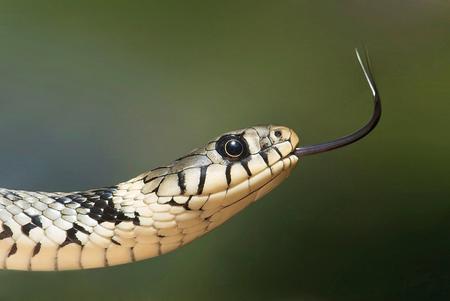 Written by Farah
Written by Farah
I would like to start by saying that I am somewhat of a self-proclaimed snake enthusiast and also a Biology student. I hope that my passion shows in my writing and, whether you’re a snake hater or fear-er, that you find yourself more partial to these stunning animals by the end of this article. Let me first make it known that the words ‘serpent’ and ‘snake’ may be used interchangeably. Snakes fall into the suborder Serpentes, giving rise to the common name ‘serpent’. It is derived from the Latin word serpentem, which means ‘crawl’ or ‘creep’.
Snakes are highly stigmatised animals. Common descriptions I hear are gross and creepy. If you’re a Harry Potter fan - evil may very well be one of them. Evidently, it is an understatement to say that they are generally quite unpopular amongst the general public. If you open your browser and look up something along the lines of the most common fears in humans, you will observe a recurring element in each list - ophidiophobia. Ophidiophobia refers to the fear of snakes. While it is a perfectly reasonable fear possibly owing to natural survival instinct,
please may I ask that you set aside your differences with them for the length of this article while I tell you more about this greatly misunderstood species and maybe even kill a misconception or two.
Let’s start from the beginning. The very beginning. Research conducted in 2021 shows that all living snakes can be traced back to a number of species that survived the impact of the asteroid 66 million years agothe same asteroid that wiped dinosaurs and in fact 76% of all species right off the face of the Earth. Actually, if you were to ever get up close with a snake (under safe conditions, of course), you will notice that they have these odd claw-like structures called cloacal spurs - visible evidence that snakes evolved
from legged reptiles! They’re practically useless now because, well, snakes don’t exactly need them to walk. Saying that, they do have their use in intense courtship rituals, where male snakes will attempt to puncture each other with these spurs to win the right to mate with a female, so I wouldn’t say they’re there just for show. That aside, it is said that the snake’s ability to burrow underground and go weeks without food greatly increased its survivability when three-quarters of the world was decimated. The deaths of their direct competitors meant that snakes absolutely flourished. They exploited their new habitats and the influx of prey, resourcefully evolving into the loathsome predators we know today.
There is a difference between poisonous and venomous. To put it simply, if you ingest something and you are killed, it is poisonous. If something bites you and you are killed, it’s venomous. There are three main ways a snake can kill: by constriction, by injecting venom and… by eating alive. It’s morbid, but they’re not near the top of the food chain for nothing. Larger snakes quite literally squeeze the life out of smaller prey by coiling around them, hence constriction. The toxin of venomous snakes can do one of two things: immobilise the prey or cause internal bleeding which kills them. As for the last bit, I think it’s self-explanatory enough.
Cloacal spurs on a boa constrictor
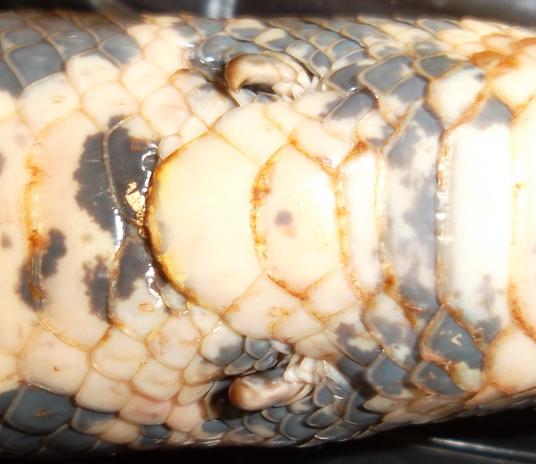
How exactly do snakes kill their prey? The obvious answer is - they’re poisonous! That would be wrong. Poisonous snakes do not exist. They really don’t. But venomous snakes do.
What’s interesting is that of the 3,000 different species of snake, only 600 are venomous and only 200 can actually kill. That’s only about 7 per cent! To add, most snakes do not actually actively hunt humans down. For example, the King Cobra is quite human-shy and prefers to avoid confrontations with humans when possible. Of course, there are exceptions. Some snakes will chase you down when threatened. The best piece of advice when it comes to a wild snake? Don’t. Provoke. It.
Snakes are formidable predators, but they have infamously poor eyesight and not-so-great hearing. You’d think they have laser-sharp senses to have been
able to climb as high up the food chain as they are, and that’s because they do, just not in the way humans are familiar with. Snakes stick out their tongues. A lot. It is one of their distinguishing traits, and you may be wondering why they do so. Snakes actually use their tongues to smell, and it is absolutely amazing how it works. When a snake sticks its tongue out, it collects odour particles in the air. When it is retracted, the tongue swipes against the roof of the mouth over an organ called the Jacobson organ which sends sensory messages to its brain, which then interprets it as smell. It is the same concept as the effect of light shining on the retina which sends signals to the brain via the optic nerve which interprets it as an image. Not only that, but snakes have what is basically a built-in infrared camera. You will notice that snakes have these holes in their face called pit organs. These are protein channels activated by heat (oftentimes heat of their prey) that leads to the snake being able to ‘see’ up to 1 metre in complete darkness, meaning they are able to construct a thermal profile of their prey similar to the image below. I find it
fascinating how they are adapted for such things, but that might just be my bias talking.
Now that we have established that snakes are pretty cool in their own right, let’s discuss the fear surrounding them. I can come up with a number of logical reasons off the top of my head as to how snakes are able to evoke this strong fear and disgust. Most obviously, they are capable of killing us, and that rightfully sets off alarm bells in our heads. According to the World Health Organisation, around 81,000 to 138,000 people die from snakes each year. However, to put this into perspective, car accidents claim an estimated 1.35 million lives yearly. Smoking? 7 million. Most of us do not flinch at the prospect of entering a car and clearly not enough of us have a fear of cigarettes. So why the fear of snakes? The truth is that it may be innate.
Studies show that humans seem to have a faster reaction time to snakes in particular compared to other objects owing to stress. A group of researchers from the Max Planck Institute in Germany and Uppsala University in Sweden proved this by observing the reaction of babies to photos of snakes compared to flowers, for example. At the sight of a snake, the baby’s eyes became significantly more dilated compared to the sight of flowers,
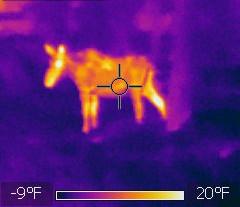
signifying increased levels of stress. So even though there are cultures where snakes are viewed as symbols of divinity, good fortune and great harvest, they are still fearsome creatures to most.
So that’s that. After everything I’ve written, you may be even more curious as to why snakes are still my favourite animal. I mean, it’s not like I’d reach out to a snake in the wild as I probably would with a friendly cat (my survival instincts are very much still intact). I just find them to be such magnificent yet misunderstood animals. They’re such instinctively curious beings and I appreciate how most of the time, they’re simply minding their own business. Doing my own research and learning about their habits and quirks have made them very endearing to me and one day I’d like to have a snake of my own – just maybe not the venomous kind.
A corn snake. How scary! They are actually non-venomous and considered to be one of the most docile species of snake
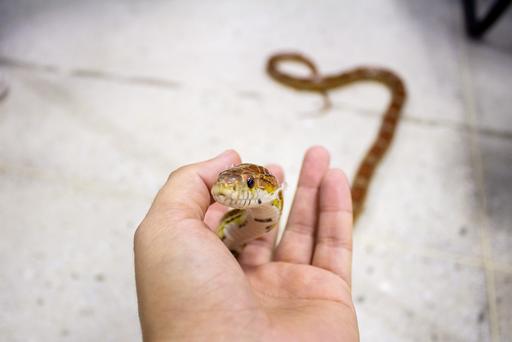
Is ‘we can’t measure intelligence accurately’ a myth?
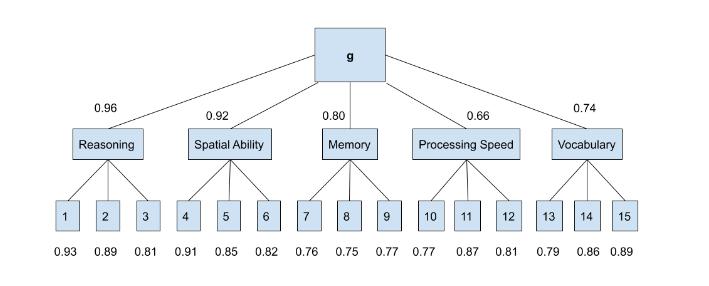 By Eleanor
By Eleanor
Exactly how to define and measure intelligence has been a subject of controversy for decades and not just within the scientific community. There is a kind of myth that intelligence cannot be measured and that tests for intelligence (IQ tests) are wildly inaccurate. However, this is, for the most part, not true. So what is intelligence and how do we measure it?
The first step in this problem is to define what we mean by intelligence. Do we mean our efficiency at memorising and then recalling facts? Our problem solving abilities? Or the speed and effectiveness of our learning? Take Daniel Tammet, a young autistic man who was given one month to learn as many digits of pi as he could and then proceeded to recite 22,514 digits correctly live on the BBC. Daniel had an IQ that was higher than average. Kim Peek was another man who had an exceptional memory and could remember facts after only reading them once. However he had a lower than average IQ. Therefore we can conclude that either IQ tests are inaccurate or we should not define extraordinary but narrow mental ability as intelligence.
For most researchers intelligence is defined more widely: “[the general mental capability involving] the ability to reason, plan, solve problems, think abstractly, comprehend complex ideas, learn quickly and learn from experience” (Linda Gottfredson, 1997). Those with exceptional abilities, like Tammet and Peek, are known as savants but their talents are not considered to be especially significant when measuring general intelligence. Tests that measure intelligence test a wide range of mental abilities and the trend is that if an individual does well in one set of tests then they will likely do well in the other areas too. These tests then can form an estimate for what is known as the general factor of intelligence (g). This is shown in Figure 1, where you can see fifteen tests for different mental abilities which all correlate positively with g. Reasoning tests have the strongest correlation with g (0.96) therefore it is likely that intelligence tests that focus on reasoning ability are the most accurate estimates of g.
Therefore, IQ tests are reasonably accurate because their tests sample different mental factors, giving them a good estimate of g. The original purpose of the IQ test, which was developed in France by Binet and Simon, was to identify academically underperforming children in schools whose underperformance was not due to behavioural issues or issues at home. IQ tests can hence be really useful to identify the individuals who need special support throughout their education and life. This is why your score on an IQ test is also not just how many correct answers you made; it factors in both your age and then how you do compared to the rest of the population: which makes it a good estimate of an individual’s intelligence compared with their peers.
On the other hand, the IQ test’s unreliable reputation is not completely unfounded. It is always important to remember that IQ tests are only estimates of g (as shown by Figure 2) because we still don’t know a reliable method of quantifiably measuring intelligence. Furthermore, many IQ tests (particularly those labelled as “fast” and “free”) are not accurate and checked by experts. Typically, an accurate IQ test will take about one hour and has its results interpreted by an expert scientist.
The dark history of the IQ test also plays a role in its reputation. In the USA in the early twentieth century, IQ tests were used as part of a rising belief that what was known as ‘mental retardation’ was hereditary and those who received low scores were sometimes sterilised against their will. IQ tests are also often baised towards a western perspective which means that minority groups often underperform. For example, individuals for whom English is a second language or those with dyslexia might struggle under the time pressure of these tests whilst being actually very intelligent. Additionally, scores on IQ tests can be increased by training and practise which means that those with more knowledge of the strategy of IQ-test-taking, or even just test-taking, have an advantage over those without. Therefore, it should be obvious that using intelligence tests, especially IQ tests, should not be the only factor when considering an individual for an opportunity; for example, a job or a place at university.
In conclusion, IQ tests are a useful tool to identify individuals with learning disabilities in order to give them access to the help that they require. However, they also should be treated with caution to ensure that they are not baised against certain groups in a population and that the one you are using is in fact a reliable estimate of g (the general factor of intelligence). The definition of intelligence, while a complex and controversial subject, is widely accepted as an individual's high performance across a variety of tests for different mental abilities (for example: spatial reasoning or problem solving). So yes, we can measure intelligence and, with the right test, we can do so accurately. But until further research leads to a greater understanding of this subject, IQ tests and measures of intelligence will remain only as estimations of an individual’s intelligence and should be viewed as such.
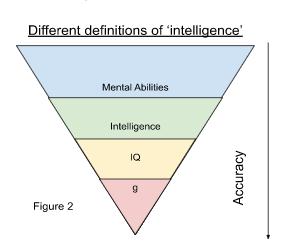
Could there be Life in our Universe?
 By Abbie
By Abbie
Life on Earth needs many things to survive. Some of these things include liquid water and the elements that are associated with life including: Carbon, Oxygen, Hydrogen, and Nitrogen. Astronomers can look for these properties when looking for life on other planets.
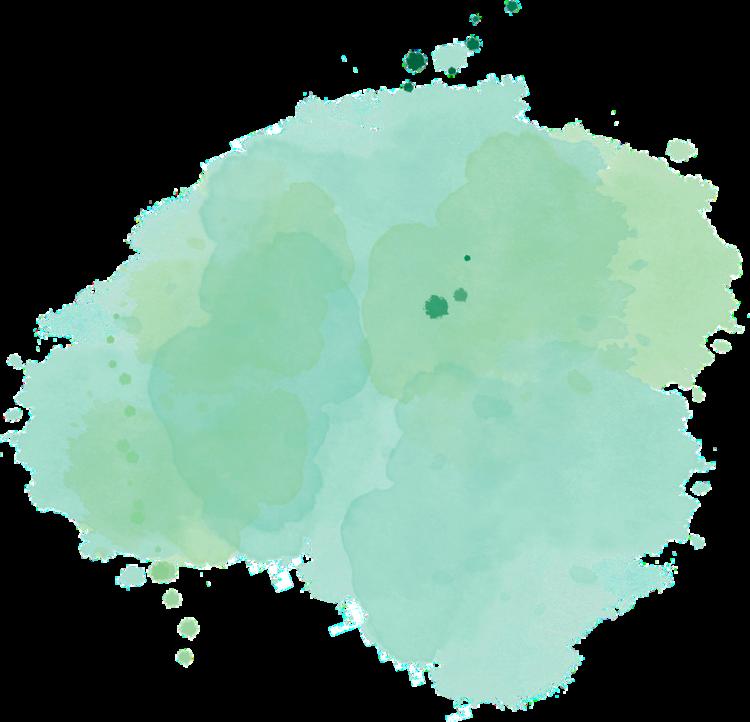

As our technology and understanding of the conditions needed for life on Earth improve, the odds of us finding life outside of our solar system is increasing. Many astronomers have tried to predict the probability of there being civilised life on other planets. One of these astronomers was Frank Drake who created the Drake equation which was published in 1961. The equation multiplied several factors together including the mean time of star formation, the number of stars that could support life and the amount of intelligent life that can communicate with humans in order to get a number which is a prediction of the number of civilisations humans could communicate with in the universe.
Drake's equation took into account the Habitable Zone (or Goldilocks Zone) which is the area within a certain distance from a sun which would allow for there to be liquid water as long as there was a suitable atmosphere. This zone is a different distance away from each star, as it is determined by looking at the star's size and therefore calculating the amount of energy it outputs in our solar system. Venus and Mars are on the edges of this zone in our solar system and obviously Earth is in the middle of the Habitable Zone. This zone allows for astronomers to narrow down the planets that could potentially have life. The next step when looking for liquid water would be to look at the atmosphere of each of the planets they've identified as being a suitable distance from the star they orbit around. On the 25th of December 2021 NASA launched the James Webb telescope which will enable us to learn more about the atmosphere of these exoplanets.
However, astronomers are also hopeful about planets and moons in our solar system. Currently there is a rover on Mars called Perseverance in a crater doing analysis as astronomers believe there may have been liquid water here. Despite it being too cold for it to still exist, astronomers hope that some simple bacteria like organisms may have evolved to survive. Astronomers are also closely looking at two moons called Europa and Enceladus which orbit Jupiter and Saturn respectively. Although they are coated in a thick (10-15 miles deep) layer of ice, astronomers believe there may be a liquid ocean underneath which may have life that has developed in it.
Enceladus has gaseous plumes which emerge from its surface and scientists have already sent a spacecraft through one to analyse a sample, it contained: Salt, Water, Ammonia, Methane and Propane. This is strong evidence that there may be an ocean under the ice. In 2024 NASA is planning to launch a spacecraft to orbit around Europa to study it to see if it may be suitable for life.
In conclusion, although no evidence of other life in our universe has been found yet, the possibility of even finding a simple organism somewhere else in our universe would be incredibly exciting.

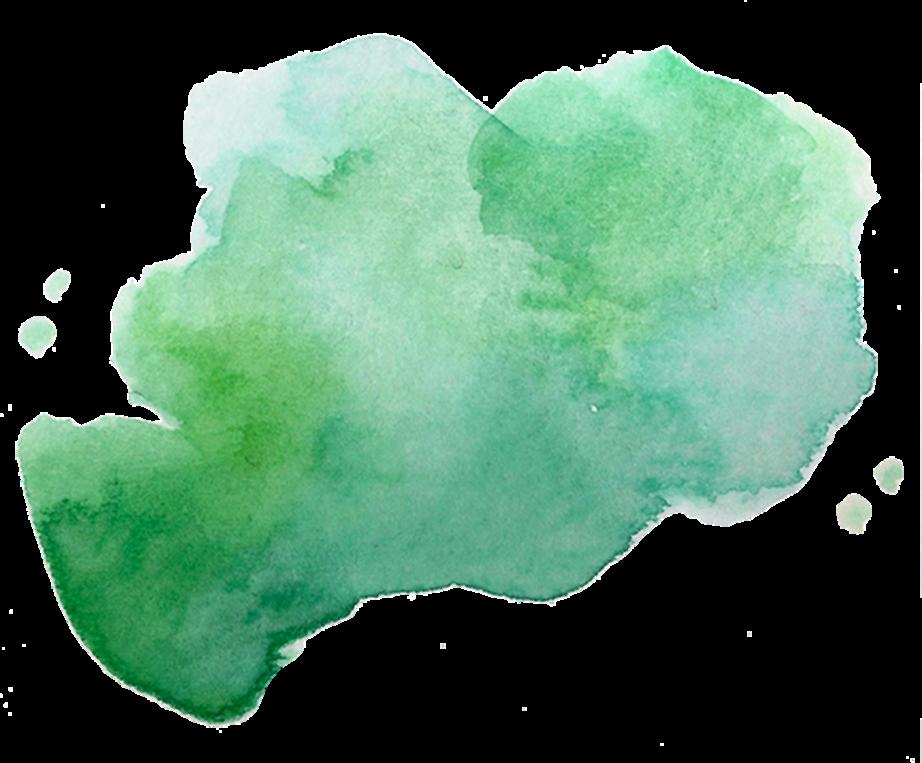


The Loneliest Whale in the World: the 52 Hertz Whale
Charlotte ChanThe 52 hertz whale, also known as the ‘loneliest whale in the world’, has a life that is marked by isolation and lack of communication. Blue whales typically vocalise at 10-39 hertz, while fin whales at 20 hertz. However, this unique whale has an unusual pitch of 52 hertz with shorter and more frequent call patterns than blue whales and fin whales, making it impossible for it to be heard or responded to by any of its peers.
Having the ability to produce and perceive a sound is very important for a whale as it is used to navigate, to find food and to communicate with other whales. Different kinds of whales produce different types of noise: tooth whales like killer whales use echolocation for hunting and navigating, which is to produce sounds for it to be reflected back from objects for the whales to locate them, while baleen whales like the blue whales generally produce a series songs known as ‘songs’ to communicate. Though female baleen whales also vocalise, it is mostly male baleen whales that ‘sings’, leading scientists to believe that its purpose is to attract mates during their mating periods. Although the species of the 52 hertz whale is still unknown, scientists speculate that it may be a male malformed blue whale or a hybrid of a blue and fin whale. This means that the whale would be unable to find a mate due to its inability to communicate with others.
Although this lonely whale's unique frequency may go unheard by its peers, it could be detected by us humans. Its unique call was first detected by a group of WHOI biologists in 1989 in the North Pacific ocean, from a whale travelling in the same way and area as blue and fin whales in the region. The WHOI team used a Sound Surveillance System, a hydrophone network built to monitor Soviet submarines during the end of the cold war. Having twice the frequency of a typical whale song, before being identified as the call of a whale, this signal was first mistaken for being a machine. They used the hydrophones again the following year and picked up the same call from this whale and had tracked it every year for 12 years ever since despite it being a challenging task as there was only one source each season with the same characteristics. Over 12 years, the team had tracked down the call of the whale around August and December and monitored it until it swam out of range during around January and early February.
The years went by as scientists started to assume that the whale is dead. Until in 2015, when producer Joshua Zeman decided to film a documentary, The Loneliest Whale: The Search for 52, to once again start a search for the whale. To their surprise, they were able to find the mysterious whale alive and presumably well in an unexpected location, closer to the shore off the west coast of the US near Los Angeles, giving the team greater accessibility. However, its location also posed another challenge: some of the world’s busiest shipping lanes are located there. This caused disruptions to the hydrophones as they were often overwhelmed by the noise of the passing shipping cargo, thus making the search of the whale much more difficult since their sounds could not be easily detected. This difficulty also shed light on the noise pollution that the whales face, as the commercial shipping noises would interfere with whale communication, forcing them to increase the frequency and volume of their vocalisation in order to be heard.
While the whole world is sympathising for the 52Hz whale, it is important for us to acknowledge that there is not enough scientific reasoning to prove that this whale is actually lonely, let alone the loneliest. We also cannot confirm that there exist only one whale that produces a sound of 52 hertz, as the varying findings could originate from a different high-pitched whale. After all, the ocean is too big and unpredictable, with lots of secrets yet to be discovered by mankind.
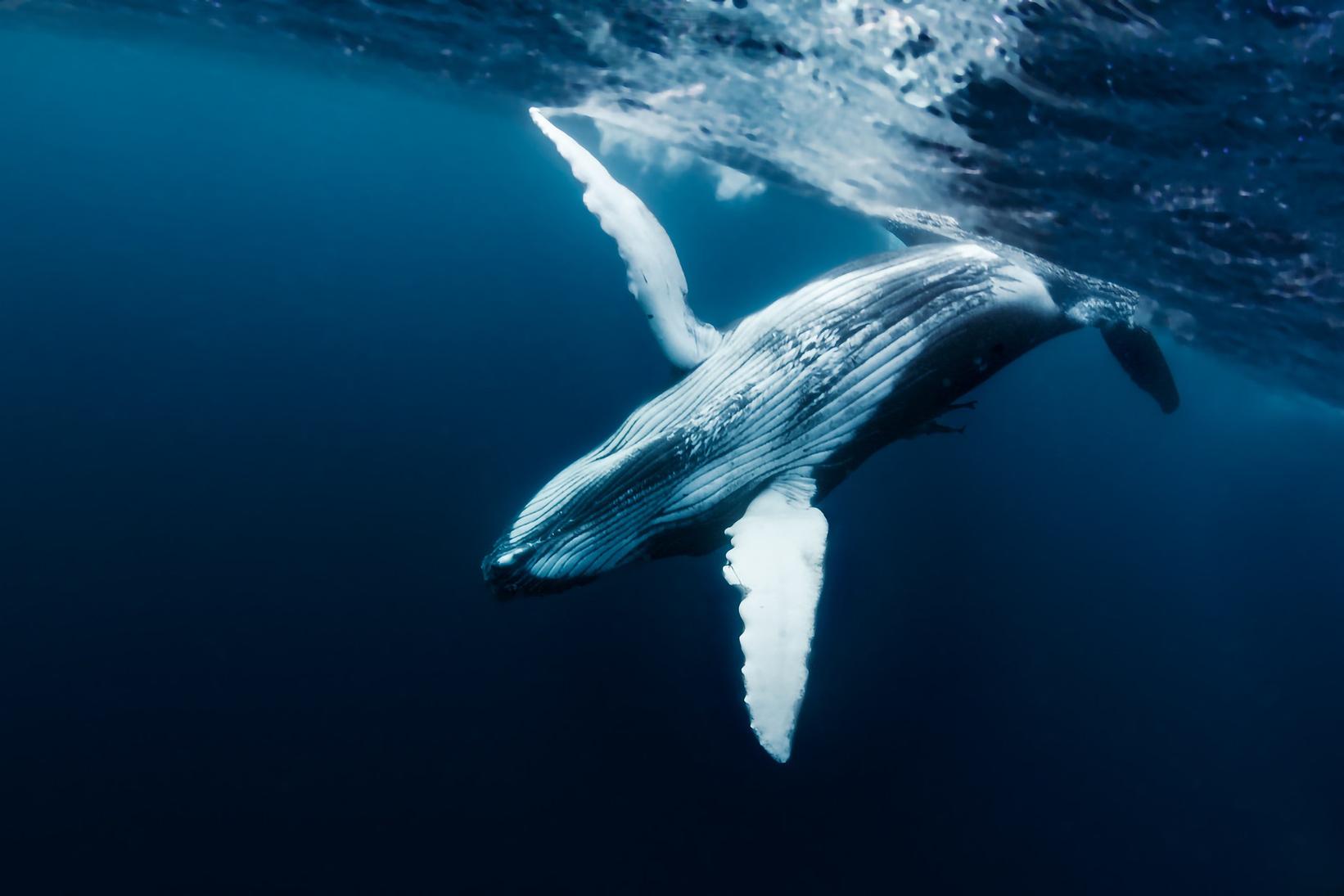
‘Cystinosis - mutation and inheritance to disease’
Introduction to cystinosis
Cystinosis is a rare, inherited disease, which affects 1 in 100,000 to 200,000 newborns across the world. There are 3 types of cystinosis: nephropathic cystinosis, intermediate cystinosis and non-nephropathic (or ocular) cystinosis. Nephropathic cystinosis is the most severe and is detected at infancy and is the most common. Cystinosis damages many parts of the body, for instance muscles, thyroid, pancreas and testes, with the particularly vulnerable parts being the eyes and kidneys. Nephropathic or intermediate cystinosis may require a kidney transplant, however non-nephropathic cystinosis only affects the corneas of the eyes.
The CTNS gene mutation as a cause to cystinosis
All three types of cystinosis are first caused by a mutation in the CTNS gene. The mutation codes for a different base, which produces a different amino acid. This causes the polypeptide chain to fold up differently, and causes the deficiency/reduced number of a protein produced, called cystinosin. Cystinosin is a transporter protein, which is usually transported to cells in the body, and then performs the role - to remove cystine, an amino acid, out of lysosomes. The term lysosome means a round organelle with a membrane within a cell, which is used to degrade/digest materials that would not be needed by the cell, in this case, cystines. However, when cystinosin is not present due to the mutation, cystine levels build up, and this damages cells mainly in kidneys and eyes, but also muscles, thyroid, pancreas and testes. When diagnosed with cystinosis, the allele for the disease is recessive, which means that the disease only has an effect/is present if the alleles received from both parents are the same. This is an explanation for why cystinosis is a rare disease.
Experiment on the genetic basis of cystinosismethod and results
2 Iranians (aged 9 and 11) diagnosed with cystinosis, had their genetic basis investigated. They had renal insufficiency caused by cystinosis (renal insufficiency refers to a reduced blood flow to the kidneys caused by renal artery disease, which causes the kidneys to function poorly). In this experimental study, they had genetic counselling, where their and their parents’ blood samples were taken. The genomic DNA, meaning the total set of genetic information of an organism, was taken from the whole blood and the experimenters performed mutation analysis. This was where the polymerase chain reaction was carried out and also sequencing methods, testing all exons of the CTNS gene. Exons are regions of genomes that end up within an mRNA molecule, where some are coding and the others are non-coding. The results showed that there were at least 148 different pathogenic mutations.
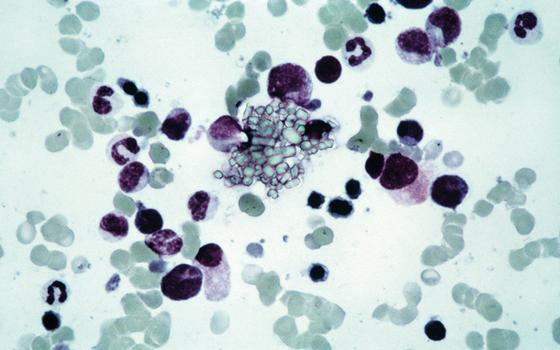
Conclusions of the experiment
The findings lead to the conclusion that there was a homozygous mutation in exon 6 of both patients. However, the mutations in the parents’ genes were heterozygous, meaning that although they had the carrier genes, there were no effects. The variations of three parents in the CTNS gene were frameshifts, meaning that the base pairs (in this case involving the mutation) are removed that are not a multiple of 3, which could disrupt the triplet coding of the DNA sequence. These conclusions support that the disease cystinosis is extremely rare, as it is rare to have this particular mutation that has an effect. Since it is reported that mutations are rare, this means that the patients have a high frequency of mutations in their genome
Time Travel: Fact or Fiction?
By IzzyTime travel is a popular topic in science fiction and has been since H.G. Wells published the revolutionary “Time Machine”. But is that all time travel is - fiction? Physicists have heavily explored the idea of time travel and multiple theories have been published that allow for the possibility.
Einstein published the ‘Special Theory of Relativity’ in 1905 which describes the relationship between space and time. He concluded that all things are measured relative to something else. This means that the faster one object moves, relative to another, the slower that first object experiences time. To test this, scientists used two clocks, set to the same time, one on land and one flying in an aeroplane in a positive direction around the earth. After the aeroplane finished its journey around the world, the clock was slightly behind the clock on land. This is because the plane was travelling faster than the clock on the ground and therefore the aeroplane clock was travelling slightly slower in time relative to the 1 second per second that we experience on Earth.
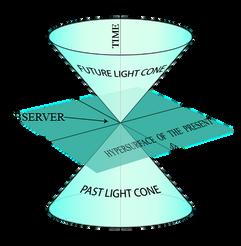
When astronauts Scott and Mark Kelley, a set of identical twins, went into space, they experienced this first hand. Scott Kelley spent 520 days in the Earth’s orbit on the international space station, whereas Mark Kelley spent a total of 54 days in space. The differences in speed that each brother experienced in space during their lifetimes widened the age gap between them. When the twins were born, they were six minutes apart, but when they were tested in a biological study back on Earth, the age difference was now six minutes and five milliseconds.
Although, this time gap is not as big as the time dilation experienced by Mathew McConaughey in “Interstellar” when he was on a planet orbiting a supermassive black hole (people on Earth would have experienced his hours as decades), it becomes more problematic when we consider the GPS satellites collecting data in the Earth’s orbit. These satellites orbit the planet at a speed of 8,700 mph and therefore their atomic clocks experience time slower than we do, cutting 7 microseconds off each Earth day.
Albert Einstein also proposed the ‘Theory of General Relativity’, which suggested that our perceived force of gravity is caused by the curvature of space-time and that massive objects in space, like Earth, create distortions in space-time. This means that clocks closer to the centre of a large gravitational mass (Earth) tick slower than those further away. As GPS satellites are much farther away from the centre of the Earth compared to the clock on your wall, 45 microseconds are added to each day.
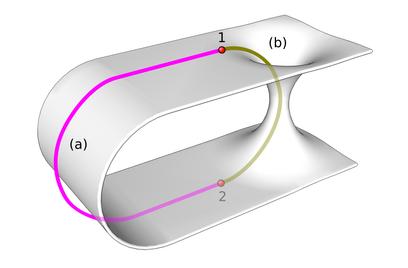
As a result, any calculations made using the data from these satellites have to account for a total of a 38 microsecond gap between these satellites and time on Earth.
Although these time distortions are not exactly the same as the time travel we see in Back to the Future, General Relativity does actually allow for some scenarios where Marty McFly could travel through time.
Wormholes are tubes or tunnels that connect through the fabric of space-time and join together different moments or locations in reality. Also known as Einstein-Rosen Bridges, these wormholes are currently hypothetical as none have been discovered yet, but there are a number of mathematical interpretations of Einstein’s theory of general relativity that allow for their existence.
Unfortunately, there are a number of issues that make it difficult for us to theoretically use them as shortcuts through space-time in interstellar travel.
Although, as of now, this appears to me to be the most convincing possibility for time travel, there are a number of other theories that could describe a method. For instance, Frank Tipler theorised that if we could form a very long, dense cylinder out of matter that is about the mass of 10 suns, and spin it a few billion revolutions per minute, a spaceship could travel backwards in time by flying in a precise spiral around this cylinder. However, the cylinder, or “black hole that has passed through a spaghetti factory” as it was described by the Anderson Institute, would have to be made of an unknown type of matter and infinitely long to allow time travel.
Firstly, their size is predicted to be microscopic, however as they are expected to have been created during the Big Bang, a number of wormholes may have been stretched to much larger diameters as the universe has expanded. Secondly, wormholes are likely to be very unstable and therefore extremely dangerous to travel through as they would collapse quickly. In order to stay open long enough for a human to travel through, wormholes would have to contain large amounts of “exotic matter”. This form of matter is formed of about 12 different types of exotic particles, like quarks, and could be used to stabilise a wormhole, allowing it to be used for time travel. However, there is much speculation among the scientific community about whether this would actually be possible in the future and at this stage technology is nowhere near advanced enough to pull this off.
Although, as of now, this appears to me to be the most convincing possibility for time travel, there are a number of other theories that could describe a method. For instance, Frank Tipler theorised that if we could form a very long, dense cylinder out of matter that is about the mass of 10 suns, and spin it a few billion revolutions per minute, a spaceship could travel backwards in time by flying in a precise spiral around this cylinder. However, the cylinder, or “black hole that has passed through a spaghetti factory” as it was described by the Anderson Institute, would have to be made of an unknown type of matter and infinitely long to allow time travel.
A more limited form of time travel was theorised by Amos Ori, a theoretical physicist at the Technion-Israel Institute of Technology. This model involved creating a Time Machine that was a donutshaped vacuum formed from space-time itself and surrounded by a sphere of normal matter. This donut would allow future humanity to visit our time, however they would be unable to visit anytime before the construction of this Time Machine. It would also be incredibly difficult to construct as we would have to manipulate gravitational fields, although this is theoretically possible.

Despite all these theories, none are possible with our current technology and there is still no evidence that time travel is even possible. Furthermore, there are a number of arguments against time travel’s feasibility in the future. For instance, the impact of gravity on the body required during any of these theories would kill any human that tried to intact them and scientists have found no way that a person could survive this level of gravitational pulling.
There are also some more philosophical issues with the idea of time travel. The ‘causal loop’ paradox makes it difficult to describe how time travel would actually work as it describes how a future event is the cause of a past event, which then in turn causes the future event. This idea that cause comes before effect falls apart in time travel. The ‘grandfather paradox’ describes this further. If you, an assassin who travels through time, was ordered to kill your grandfather, you would travel through time, find your grandfather as a young boy, and kill him. But, if you were to do this, what would happen to you? Having killed your grandfather before your father was born, you have destroyed your family line, meaning that you were never born to kill your grandfather, which nullifies the string of events. This sort of inconsistent causal loop also applies to time travel itself, for if you were to travel back in time in your newly built Time Machine, you would travel to a time before the Time Machine had been created, so it would no longer exist for you to travel ‘back to the future’, creating a paradoxical situation.
Therefore, I think, for the moment at least, time travel will have to remain in the works of H.G. Wells and the life of Marty McFly. As Stephen Hawking said, “The best evidence we have that time travel is not possible, and never will be, is that we have not been invaded by hordes of tourists from the future”, or at least not yet.
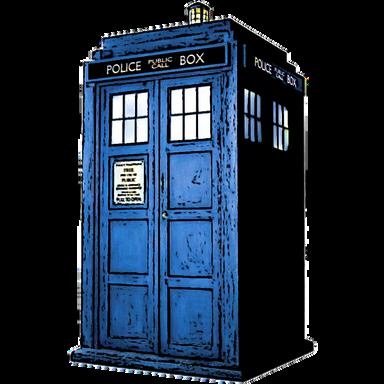
Scientist Profiles
Alice Ball
Alice Ball was an American chemist, born in 1892, who was a pioneer in the treatment for leprosy. The Ball method, named after her, saved thousands and was the only effective cure until antibiotics came around in the 1940s She studied pharmaceutical chemistry at the University of Washington and was offered numerous scholarships afterwards, but she chose to return to Hawaii where she lived for a year as a child. It was there that she became the first woman (and first African American woman) to earn a masters degree in chemistry from the university as well as the first female chemistry professor there Unfortunately, she died at only 24 years old and did not get to publish her work as it was only shortly after her discovery. Nevertheless, her work made a huge difference to many people’s lives. However, the University of Hawaii did not recognise her work for nearly 90 years, until 2000 when they dedicated a plaque to her on the school’s only chaulmoogra tree (the plant that made a huge part in her discovery).

Sylvia Earle is an American marine biologist, conservationist and explorer and she has done extensive work in research, marine conservation and environmental preservation. Some of her most well known work has been her research on marine ecosystems and the impacts of human activity on human life. Her work and advocacy has helped in establishing marine protected areas around the globe, including the Northwestern Hawaiian Islands Marine National Monument, the first of its kind in the US.

Earle has conducted large amounts of research on marine ecosystems, making significant contributions to our knowledge of the diversity of marine life and how different species are interconnected In addition, Earle has authored a number of books and papers on oceanography and marine biology and she has also been a strong advocate for education in the sciences, especially marine science. Her work has led to her receiving numerous honours and awards and she has had an undeniable impact on the field of marine biology.
Valerie Thomas
Valerie Thomas is an American scientist and inventor who has received numerous awards for her contributions to the fields of science and technology. In 1964, she started her career in NASA, where she was one of only a few women and african americans working in her area. During the time she worked on many projects, including the development of satellite technology and the creation of the landsat program. She also created the illusion transmitter, patenting the design in 1980, which uses a series of mirrors to create an illusion which appears like a three dimensional object. This led to the development of 3D imaging and holography. She was inducted into the National inventors hall of fame for this invention in 2018 and her work has had countless impacts on society and technology today.
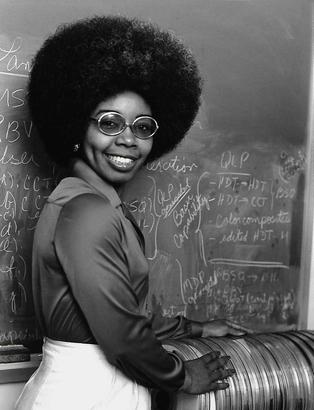 Sylvia Earle
Sylvia Earle
Gerty Cori
Gerty Cori was a prominent Czech-American biochemist who was the 3rd woman to win a nobel prize and and first woman to be awarded a nobel prize in physiology or medicine in 1947 Gerty Cori and her husband researched carbohydrate metabolism in the late 1920s and in 1929 they described the Cori cycle (a cellular process relating to how sugar is stored and processed into a usable form in the body) However, their later work would earn the Nobel prize as their identification of the enzyme that initiates the decomposition of glucose was a major breakthrough.
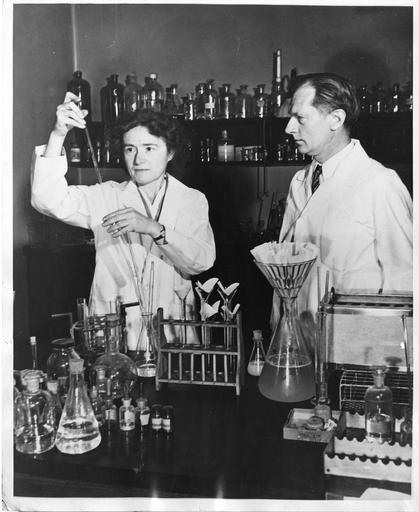
Throughout Cori’s career she battles with inequality and mistreatment, especially when compared to her husband, but she made major contributions regardless and her work on carbohydrate metabolism has been instrumental in advancing our understanding of how the body generates energy from food. Her contributions have paved the way for further research on the role of carbohydrates in metabolic disorders such as diabetes.
Margherita Hack
Margherita Hack was a renowned Italian astrophysicist who made major advancements in the field of astronomy. Hack was born in 1922 and went on to earn her PhD in astrophysics from the university of florence in 1948 Later on she became the first female director of the Trieste Astronomical Observatory, a position which she held until retirement. Under her leadership the observatory underwent a significant transformation from a provincial institute to an active international research centre She wrote more than 200 scientific publications in her lifetime and several books aimed at making complex science more accessible to the general population. Hack was also an outspoken advocate for women in science and she committed herself to increasing female representation in astrophysics. Furthermore, she spoke on political issues such as social justice and environmental protection and she died in 2013, leaving a legacy of both scientific achievement and activism.

Scientific Book Recommendations



“Racing Green: How Motorsport Science can save the world” by Kit Chapman Science: Physics/Engineering/Motorsports
“Literally just fascinating”
The technological innovations that come from motorsports allow us to make improvements to engineering and tech in everyday life. This is a very interesting book that covers a detailed history of motor sport and how improvements made on the technology for racing cars contribute to everyday society, through both safety and environmental aspects.
“Lessons in Chemistry” Science: Chemistry
“Feminism and Chemistry all combined in one amazing book”
Tells the story of Elizabeth Zott, an ambitious and hard-working female scientist who challenged how women had to conform to certain social expectations in the 1960s. As a single mother and a contestant on the ‘Supper at Six’ cooking show, she called her viewers to question issues on feminism and women's rights, all detailed here in this fascinating book.
“Your Life in My Hands” by Rachel Clarke Science: Medicine/Healthcare
This is a great book for all those interested in studying medicine or any related field. It’s all about the impacts of politics and government policies on the NHS and the NHS staff. By describing the difficulties and rewards of working as a doctor, it gives you a great idea of what a career in medicine could look like. Even if you’re not interested in healthcare, it’s wonderfully written and is interesting from both scientific and humanities perspectives.
“A really good insight into hospital life” - Eleanor Newman
“Genome” by Matt Ridley Science: Biology
This book was really interesting (although somewhat out of date now) and very cleverly structured. Every chapter is about a different gene on a pair of chromosomes and the problems caused by different mutations. If you want to find out more about genetics and topics such as Creutzfeldt-Jakob Disease, Prader-Willi Syndrome and how closely related we are to chimpanzees, this book is for you.
“Trust Me I’m a (Junior) Doctor” by Matt Pemberton Science: Medicine/Healthcare
If you have read and loved "This is Going to Hurt" by Adam Kay, you will love this book. It balances showing the struggles of working in the NHS as a junior doctor, the harsh and devastating impact of death as well as being incredibly funny. It is particularly useful to read if you are considering medicine or other healthcarerelated careers at university.
“How to Make a Spaceship” by Julian Guthrie Science: Physics/Engineering
This a really gripping read for anyone interested in aerospace engineering or even business and entrepreneurship. Written in the style of a fiction book, this tells the story of Peter Diamandis and others who, inspired by the success of Charles Lindbergh, created the XPRIZE with the goal of making private space flight a reality. This is the story of ordinary people facing the challenges of everyday life and overcoming them to create a new technological age.
“Immune” by Phillip Dettmer Science: Biology


A wonderfully illustrated book that explores how the immune system protects your body and works to keep you alive. From the creator behind ‘Kurzgesagt - In a Nutshell’, an extremely popular science Youtube channel, Dettmer engagingly describes the inner workings of the human immune system.


DO Try this at Home
Magic Rainbow
Equipment:
5 glasses
Sugar
Food colouring
Kettle
Water
Measuring jug
Method:
Add 1 tbsp, 2 tbsps, 3 tbsps, 4 tbsps of sugar respectively to 4 separate glasses.
Add 50 ml of warm water to each glass and stir until the sugar is dissolved
Add different food colourings to each glass as shown above.
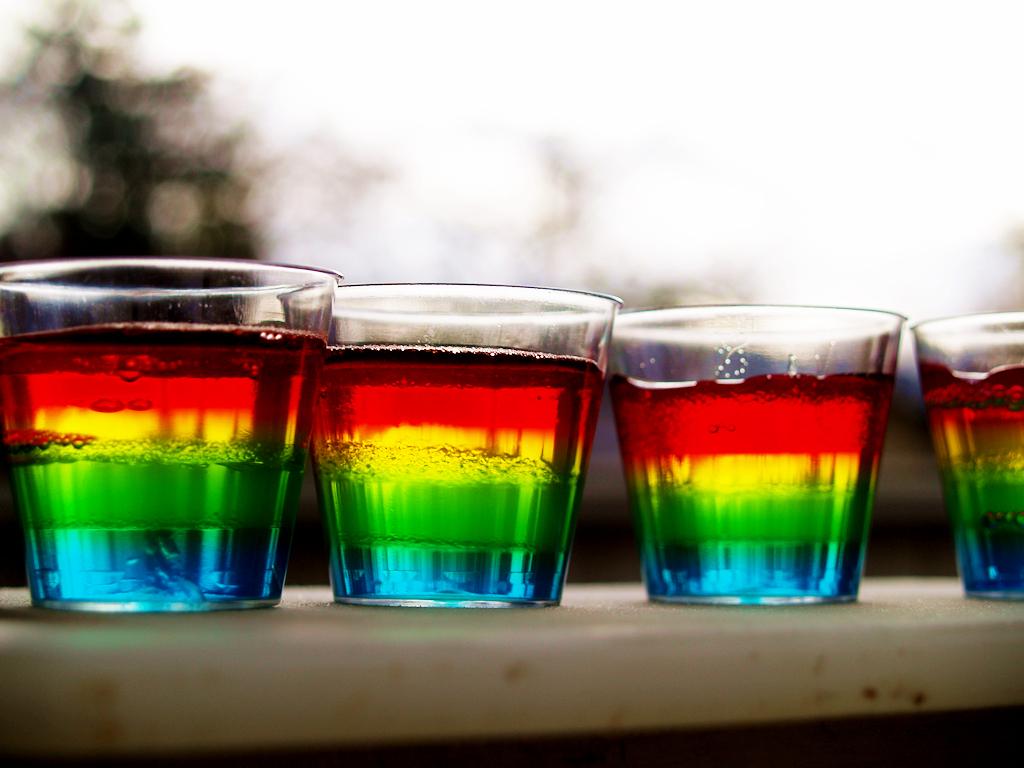
Pour the blue solution into another glass down the side until it is ¼ full.
Repeat with the other colours
Leave it to settle!
You can try this with any colours you want!
The Science!
What determines whether things float or sink? Density is a measure of a substance’s mass per unit of volume- in other words, how closely-packed the particles are.
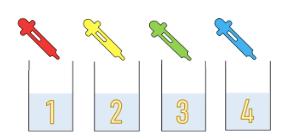
Water has a density of 1g/ml and can be made denser by dissolving solids in it as the particles fill spaces between the water molecules. Therefore in this experiment the solution with the most sugar dissolved in it sinks to the bottom whereas the solution with the least sugar rests on top.
Why do you think warm water is used?
1. 2. 3. 4. 5.Invisible Ink for Secret Messages!

Equipment:
Large glass
Water
Paper
Paintbrush
And Or
Grape Juice
45g of baking soda
Lemon
Towel
Iron
Method:
The Science!
When the invisible ink that contains baking soda dries on the paper it leaves behind small white crystals of baking soda. Grape juice contains a molecule called anthocyanin which acts as a natural indicator. Because grape juice is acidic and baking soda is basic, when they come into contact a neutralisation reaction occurs, increasing the pH of the grape juice and turning it a darker colour. Lemon juice contains citric acid which breaks down when heated. The carbon molecules become exposed to the oxygen in the air and reacts with it in an oxidation reaction which darkens the paperrevealing the message.
Add 60ml of water to the large glass. Add 4 tablespoons of baking soda and mix together
Write a message using the solution on a piece of paper
Let the paper dry
To reveal the message paint it in grape juice
Alternative Method:
Squeeze lemon juice into a bowl
Add a few drops of water
Using the solution write a message
Leave to dry
To reveal the message cover the paper with a towel and iron.
Natural Indicators
Equipment:
Various Household ingredients to test
Glasses
Water
Pan
Stove
Red Cabbage
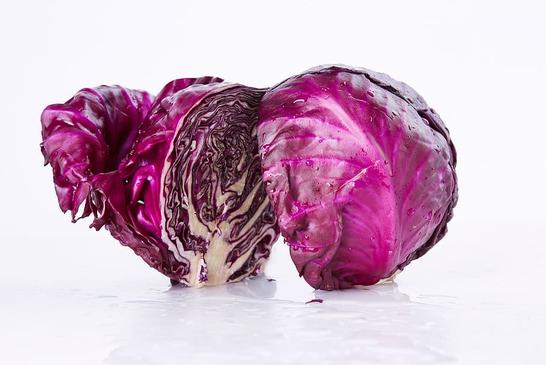
Method:
Boil the cabbage in water for 10min. This should turn the water purple
Leave it to cool then poor the liquid into a container. This is your indicator
Dissolve various substances (eg.lemon juice, vinegar, milk) in water
Add a few drops of indicator to each solution
Observe what happens
Compare the colour to the PH scale
The Science!
Solutions are acidic if they have a pH below 7, basic if their pH is above 7 and neutral if they have a pH of 7. Indicators are used to change the colour of the solution to help scientists identify which pH it is. Red cabbage is a useful indicator because it displays a range of colours and it works because it subtly changes the molecules which then give rise to their colour depending on whether the solution is acidic or basic.
Extracting DNA from Strawberries
Equipment:
Strawberries
A ziplock bag
2 plastic cups
Detergent
Salt
Cold Rubbing Alcohol
Coffee Filter
Some kind of stick/skewer
Method:
Remove all green leaves from the strawberries
Place in a ziplock bag and completely crush them
Measure out 2 tsps detergent, 1 tsp salt and ½ cup of water into a plastic cup. Stir.
Add 2 tsps of the solution into the bag. Crush some more.
Place a coffee filter inside another cup. Pour the liquid in the bag through the filter. Squeeze all fluid from the filter into the cup
Pour an approximately equal amount of rubbing alcohol into the cup and DO NOT stir.
Wait for a few moments and a cloudy substance should develop in the top layer. This is the Strawberry DNA.
You can remove it using some kind of stick (e.g. a wooden skewer).
The Science!
Deoxyribonucleic Acid (DNA) is a molecule found in the nucleus of all eukaryotic cells that contains an organism’s genetic information. Human cells have 2 copies of DNA (pairs of chromosomes) in their cells; however, strawberries have 8 copies meaning they have more DNA in their cells so it is easier to see.
Crushing the strawberries and the detergent breaks down the cell membranes of the strawberry cells, releasing the DNA. The salt breaks down the protein chains holding the nucleic acids/bases together causing the DNA’s double helix to unwind. Finally, DNA is insoluble in alcohol therefore the alcohol causes the DNA to clump together, making it visible.
 1. 2. 3. 4. 5. 6. 7. 8.
1. 2. 3. 4. 5. 6. 7. 8.
This robot automatically tucks its limbs to squeeze through spaces
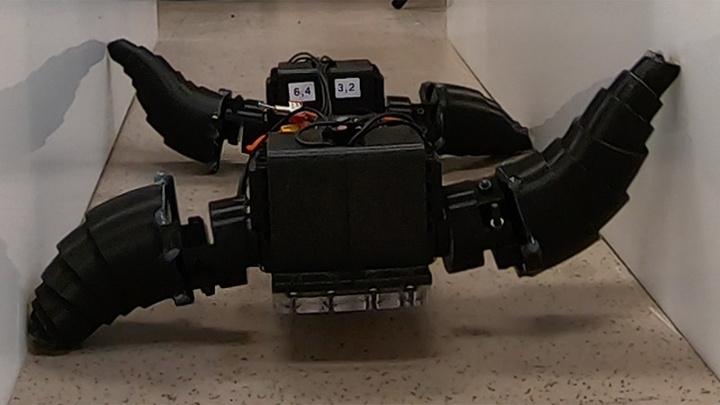
https://www.sciencenews.org/article/robot-limbsants-locomotion
Scientists were challenged to create a robot with the robot locomotion to navigate constricted passages and move on different surfaces and environments. Gavish and colleagues’ goal was to build a mechanically intelligent robot. They built a 30cm x 20cm long robot with 4 wavy, telescoping limbs with 6 concentric tubes on each limb that can draw into each other. The limbs are controlled and contracted by springs between them. This allowed the robot to squeeze into spaces 72% its full width and 68% its full height. Robotics engineer Qian says that by contacting the environment, then computing the suitable action is faster than active control. The researchers then actively control the spring constant/stiffness of springs to prevent the robot from losing too much power.
How fast arow of dominoes topples depends on friction
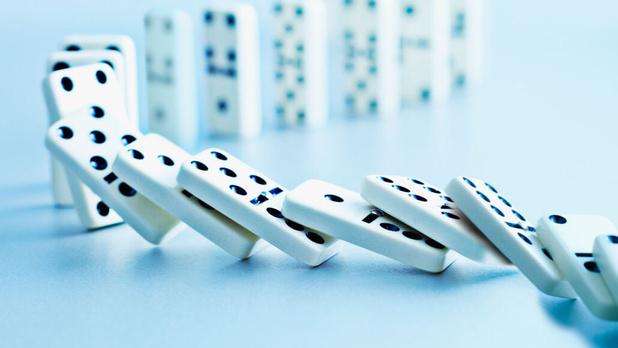
https://www.sciencenews.org/article/physics-fallingdominoes-friction

Researcher David Cantor and physicist Kajestan Wojtacki investigated how friction, when dominoes collide, affects the speed at which the dominoes collapse. Computer simulations revealed the conditions needed for a speedy collapse. The results showed that less friction between the dominoes and the surface they are on means less energy lost, so the dominoes slide further back as they fall and so this takes up less

Physics news
Aliens could send quantum messages to Earth, calculations suggest
https://www.sciencenews.org/article/alienquantum-communication-extraterrestrialcommunication-signal Scientists are currently developing Earthbased quantum communication, a technology that uses quantum particles to send information, and could possibly be more secure than standard, or classical communication by using photons (particles of light), as they can travel through interstellar distances. However, discoherence can happen, when a quantum particle loses its quantumness as it interacts with its surroundings. Nevertheless, it was found that since the average density of space is much smaller than earth, decoherence is less likely to occur.
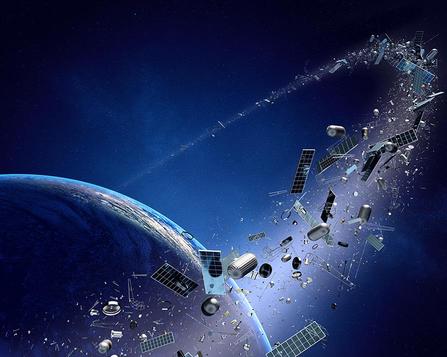

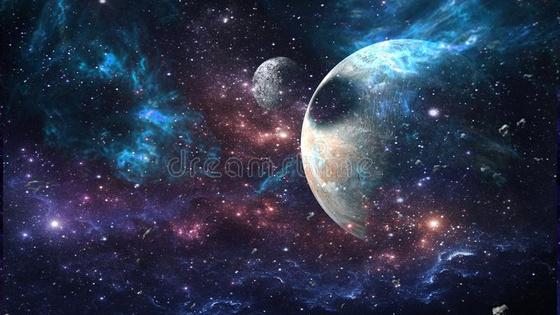
50 years ago, scientists sequenced a gene for the first time
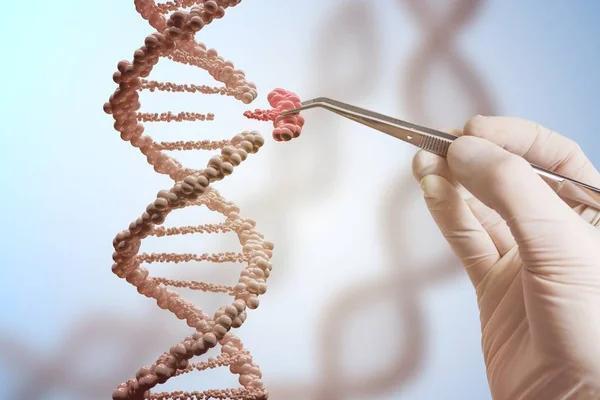
Your paragraph text
An update of the article ‘Molecular biology’s flower child’, as researchers have just unravelled a real gene that dictates the production of a protein. They have deciphered the building blocks of a gene belonging to a virus, where the gene looks flowerlike. In 2001, the Human Genome Project released a rough draft of our collective genome. The master blueprint was finally completed last year. This led to more powerful medical advances.
Biology news
Riding roller coasters might help dislodge kidney stones
https://www.sciencenews.org/article/riding-rollercoasters-might-help-dislodge-kidney-stones Researchers did a study on 2 patients, where they
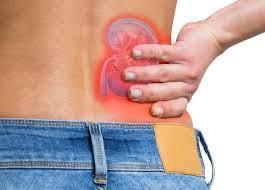
3-D printed a life-sized plastic replica of the branching interior of a human kidney, with 3 small stones (can be passed out by urine) and human urine placed inside. The researchers reported that after a spin in the rear car of the roller coaster, 64% of stones were cleared out and only about 17% passed after a single ride in the front car. Wartinger, a kidney specialist, thinks that a coaster with more vibration and less heart-pounding speed would be better at delivering a stone.
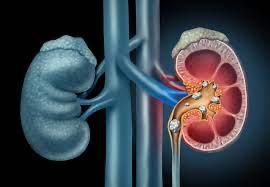
‘Vagina Obscura’ shows how little is known about female biology
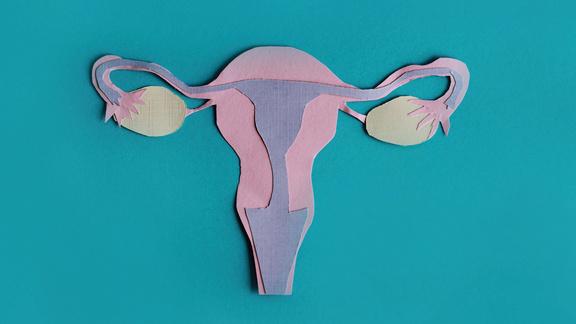
https://docs.google.com/document/d/1uYpdWXkNSssMHLqKCs
zSbjZzYgyc2LijfEep5HmNncs/edit
Vagina Obscura is a book which shows Gross’ frustration at not understanding her own body when she had a vaginal infection, bacterial vaginosis, until her doctor suggested treating it with a rat. However, the rat poison was boric acid, an antiseptic. The book explores the outside of the vaginal organ, which is the clistoris’ nerve-filled external nub, ovaries and uterus. Then it lastly focuses on gender affirmation surgery. Throughout the book, Gross confronts sexism and prejudices behind controversial ideas of female biology, and also shares stories of often forgotten researchers, such as Miriam Menkin, who showed that IVF is possible. Despite learning that a person is born with all the eggs in an ovary, researchers are now discovering the ovary’s regenerative properties. Studying female bodies more closely could improve quality of life, e.g. learning more about endometriosis, which is a painful disorder in which uterine tissue grows outside the uterus, which could keep a patient healthy.
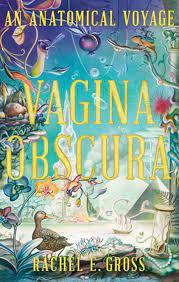
Josep Cornella breaks boundaries to make new and better catalysts
https://www.sciencenews. org/article/josep-cornellachemistry-sn-10-scientiststo-watch
Cornella is an organic chemist, and investigated a forgotten element of the periodic table, bismuth.
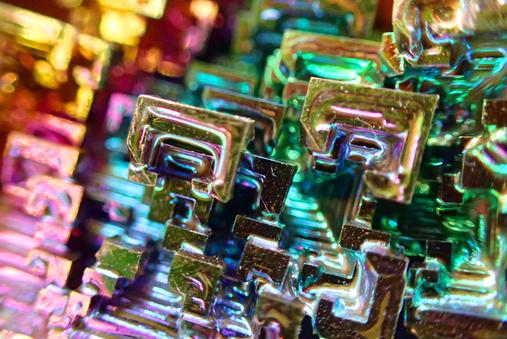
Him and his team successfully used bismuth as a catalyst to make a carbon-fluorine bond, which worked better than other transition metals as a catalyst.
In 2019, it replaced the catalyst Ni(COD)2, although bismuth was not as abundant as Cornella had hoped. Nevertheless, it saved energy and materials. Cornella’s lab also is transforming atoms in functional groups into other atoms in a single step, which could reduce preparation time from 2 weeks to 1 day, which would be useful in the pharmaceutical industry.
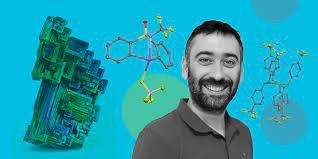
A way to snap molecules together like Lego wins 2022 chemistry Nobel
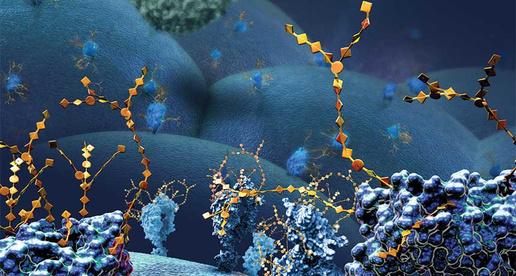
https://www.sciencenews.org/article/bi oorthogonal-chemists-bertozzi-meldalsharpless-win-2022-chemistry-nobel The Royal Swedish Academy of Sciences have awarded chemists Carolyn Bertozzi, Morten Meldal and Barry Sharpless the prize for developing click and bioorthogonal chemistry, which allowed them to easily construct complex molecules in lab and organisms. Sharpless introduced ‘click chemistry’ around 20 years ago, where 2 compounds can be quickly attached using certain connector molecules. To find these molecules, Sharpless and Meldal discovered that by adding little copper to azide and alkyne molecules, the 2 molecules snapped together, becoming a ring-shaped molecule. At that time, this discovery was considered the ‘crown jewel of click reactions’.
Furthermore, Bertozzi, with a specialty in studying sugar molecules, discovered a way to do copper-free click chemistry, which does not contain any metals that cause harm to living cells. To do this, she tricked cells into incorporating a click chemical into sugars that surround a cell. The cell is then exposed to another click chemical such as a type of alkyne, which allows the 2 click chemicals to snap together. By linking the alkyne to green-glowing molecules, scientists can study the surface of cells and develop new treatments. For instance, Bertozzi and her colleagues were able to target and deactivate sugars that were helping tumour cells hide from T-cells in the body.
